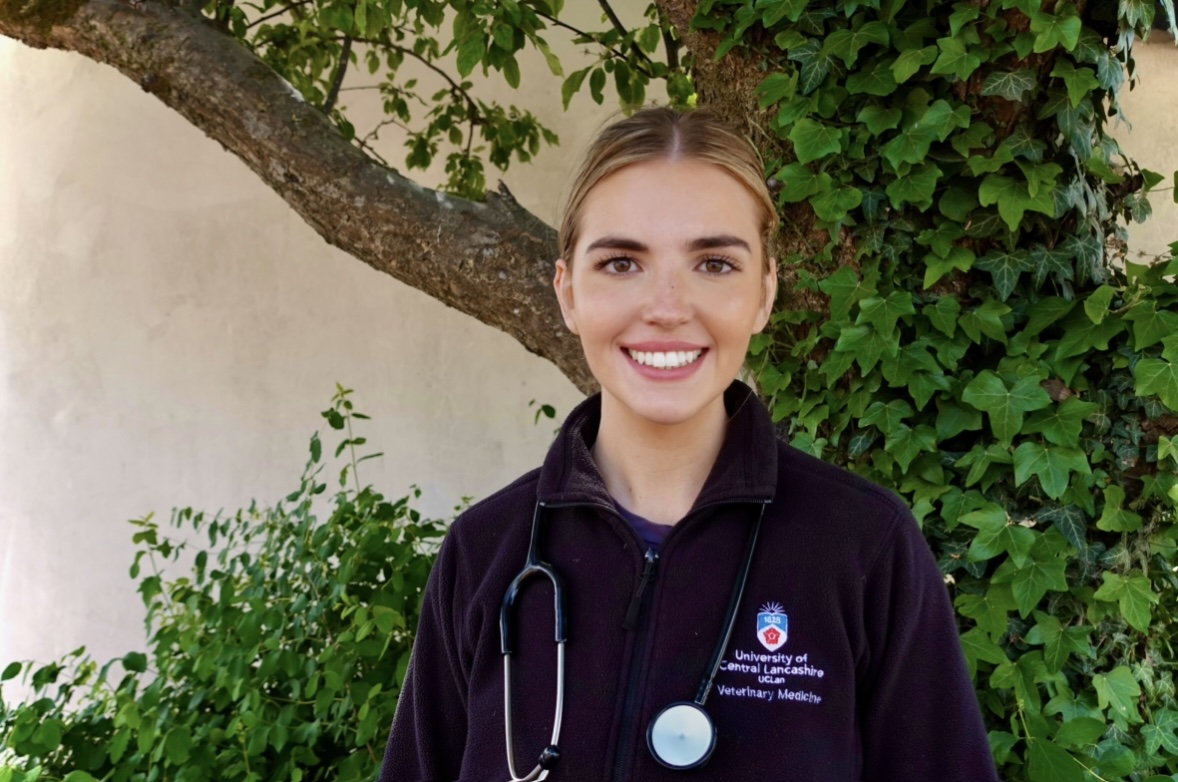The veterinary voice for animal welfare: reflecting on BVA’s updated Animal Welfare Strategy
11 Jul 2025
09 Nov 2025 | Eve Keeley
This blog shares Eve Keeley's first-year experience as a University of Lancashire veterinary student, highlighting the unique advantage of starting Intramural Rotations from year one, comparing it to EMS, and reflecting on how early clinical exposure builds skills, confidence, and resilience.

By Eve Keeley, Second-Year Veterinary Student, University of Lancashire
When I started vet school, I expected the early years to be demanding on lectures, and minimal on practical experience. This is the reality for most UK veterinary students; early clinical skills are taught within the university, and hands-on experience in practice doesn’t usually begin until third year. I feel fortunate to have had a different experience.
The University of Lancashire has introduced Intramural Rotations (IMR) from the very first year. From year one, we are out in real practices, learning from real cases and building long-term relationships with our placement teams. Instead of waiting years to step into a clinical environment, throughout years one to five we remain at the same placement, allowing us to build rapport with our chosen practice. This gives us early clinical experience and bridges the gap between theory and practice.
While EMS (Extra-Mural Studies) is vital for broad experience, IMR offers advantages EMS can’t provide. Placements are sourced by the university, ensuring quality and removing the stress of securing competitive dates. Embedded within the curriculum, IMR provides structured, hands-on learning with dedicated teaching, integrating theory and practice, easing the transition to clinical years, and helping students build skills, mentorship, and confidence from the start.
Before stepping into a real veterinary practice, we had small-group preparation sessions covering expectations, professional behaviour, and how to make the most of placement. To match our interests, we ranked preferred practices.
For my IMR, I joined Gillivervets Equine Practice. From day one, the team created a welcoming environment where I could learn and make mistakes. I was quickly involved in procedures I’d never expected so early from vettings to gastroscopes and even a wolf tooth removal.
One key memory was taking my first blood sample from a horse. I’d practised in clinical skills classes, but doing it on a real animal, with the vet, the owner, and the yard manager watching, felt much more pressure! The vet’s guidance kept me focused, and when I succeeded, the relief and achievement were unlike anything I’d experienced before.
Early IMR supports the university’s hands-on, neurodiverse-friendly approach by easing the transition into full-time clinical rotations and reducing the pressure of later EMS placements. It gives students mentorship, deepens industry understanding, and helps confirm career paths.
Alongside IMR, we also complete EMS. EMS is essential for exposure to different settings but is generally less structured, as it is arranged by students and not part of the curriculum.
My lambing EMS was an amazing experience. Over two weeks, I was involved in everything from monitoring ewes in labour to managing breech lambs, prolapses, and orphan adoptions. I worked alongside vets, farmers, fallen stock collectors, and clients, each offering insight into farm animal work. I gained skills from communication to problem-solving under pressure.
However, not all EMS is as rewarding. At a wildlife rescue, I spent most of my time cleaning cages. While I appreciated the hard work behind animal care, the limited exposure was a contrast to both my IMR and my lambing EMS.
This variability is why I think early IMR is such an advantage. With IMR, every student gets consistent, high-quality learning opportunities, guided by practices that have volunteered to teach.
My first year has been shaped as much by placements as lectures. IMR has given me early, hands-on experience and improved my clinical and communication skills. Whether taking blood from a horse, delivering a lamb, or cleaning an aviary cage, each moment has taught me something valuable. This year has laid a strong foundation for the rest of vet school and my future career.
Get tailored news in your inbox and online, plus access to our journals, resources and support services, join the BVA.
Join Us Today